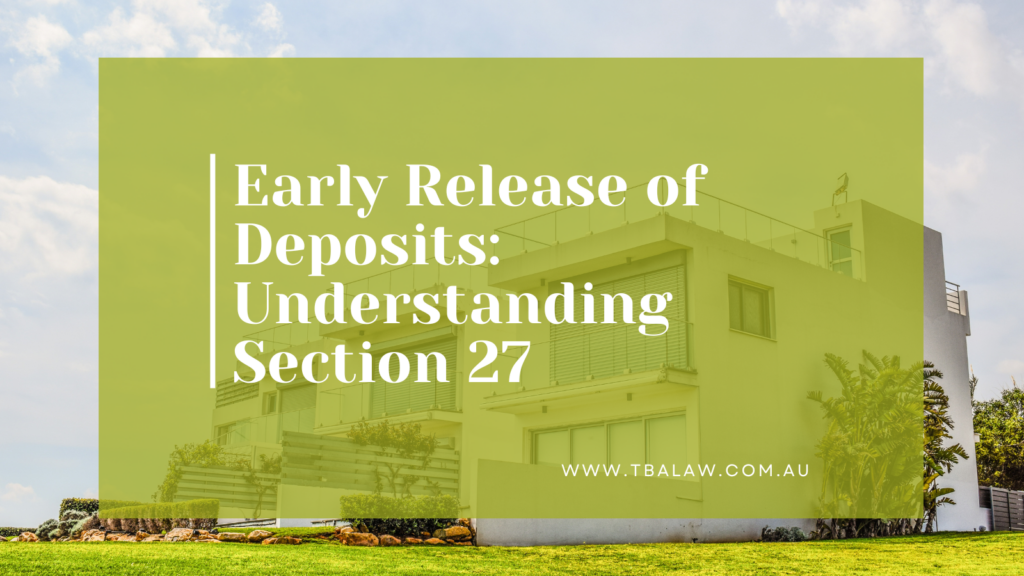Early Release of Deposits: Understanding Section 27
by Sarah Coombs
When buying or selling a property, it is common practice to pay a deposit as part of the contract. Typically, this deposit amounts to 10% of the purchase price, although it can be negotiable with the vendor. However, there are situations where individuals may need early access to their deposit funds for various reasons, such as purchasing another property, paying off debt, or dealing with long settlement periods.

To address this need, a process called Section 27 allows for the early release of the deposit, provided certain requirements are met by the vendor. These requirements include demonstrating that the remaining funds are sufficient to pay off any outstanding mortgage, ensuring there are no caveats lodged against the property, and resolving any other issues that may hinder the release. It is important to note that the contract must also be unconditional, meaning all conditions, such as financing and inspections, have been met.
To initiate the Section 27 process, solicitors play a crucial role. Once they receive instructions for an early release of the deposit, they compile the necessary documentation to support the buyer’s request. This documentation typically includes a form that outlines the details related to the deposit, such as whether it will be used to pay off the mortgage or verify the absence of a mortgage altogether.
When requesting a Section 27 release, several documents are required. Firstly, a request is sent to the bank for a Section 27 statement, which provides details regarding the outstanding mortgage, the amount required to pay it off, the deadline for payment, and any applicable interest rates. This information may take some time to obtain if the bank needs to compile the necessary details.
Additionally, a title search is conducted to ensure there are no caveats registered against the property. If a caveat is found, its purpose or nature must be clarified to proceed with the release of the deposit.
Once all the necessary documentation is compiled, a Section 27 statement is prepared, signed, and sent to the purchaser. The purchaser then has 28 days to review and sign the form or provide a valid objection. If the form is not returned within 28 days without a valid objection, the deposit will automatically be released.
It is important to note that the Section 27 process may take some time to complete. Even if the purchaser promises to expedite the process, they cannot contractually bypass the timeline set by the Section 27 of the Sale of Land Act. Consequently, it is vital to consider the potential timeframe involved, particularly when using the funds for specific purposes.
If the Section 27 process is not successfully initiated, the deposit will be released along with the rest of the purchase funds at settlement. It’s worth noting that one risk of requesting an early release of the deposit is that if the contract is defaulted, the vendor may be liable to repay the funds. However, if the purchaser defaults, they do not need to repay the deposit.
When considering a Section 27 release as a buyer, it is essential to consult with your solicitor or conveyancer to ensure a thorough review of the statement and its contents. Additionally, it is important to understand that there may be no recourse to retrieve the deposit if the contract is defaulted and the funds are no longer available.
To navigate the Section 27 process successfully, we highly recommend seeking the advice of your legal advisor. They can guide you through the process, ensuring that all requirements are met in a timely manner.
If you require further assistance, please feel free to reach out to our team at 1300 043 103 or email admin@tbalaw.com.au.






Leave A Comment